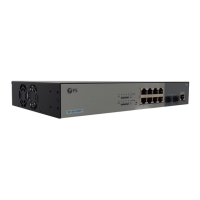www.fs.com
2
Command Mode Access Mode Window Prompt Logout Mode
System
Supervision Mode
Type “Ctrl-p”
after power on
monitor# None
User mode Login Switch>
Run the “exit” or “quit” command.
EXEC mode
Enter the “enter” or “enable”
command in user mode.
Switch#
Run the “exit” or “quit” command.
Global
Configuration mode
Enter the “config”
command in EXEC mode.
Switch_config#
Run the exit or quit command or just
press the “Ctrl-z” composite key to
return the EXEC mode.
Port
configuration mode
Type the interface command
in global Configuration
Mode, e.g. interface g0/1
Switch_config_g0/1#
Run the exit or quit command or just
press the “Ctrl-z” composite key to
return the EXEC mode.
Each command mode will certainly limit you to use a certain command subset. If you have trouble in inputting a command, check
the interface prompt and input the question mark (?) for a list of available commands. You might be in the wrong command mode or
using incorrect syntax.
In the following example, please pay attention to the change of the window prompt and its new command mode:
Switch> enter
Password: <enter password>
Switch# config
Switch_config# interface g0/1
Switch_config_g0/1# quit
Switch_config# quit
Switch#
1.5 Canceling the Command
If you want to cancel a command or resume the default attributes, usually add the “no” keyword before most commands.
For example, no ip address.
1.6 Saving the Settings
You may need to save the configuration changes, so that you can recover the original configuration in case of system restarted or
power cuts. You can use write command to save configuration in the Administration Mode or Global Configuration Mode.
POE+ SERIES SWITCHES CON
FIGURATION PREPARATION GUIDE

